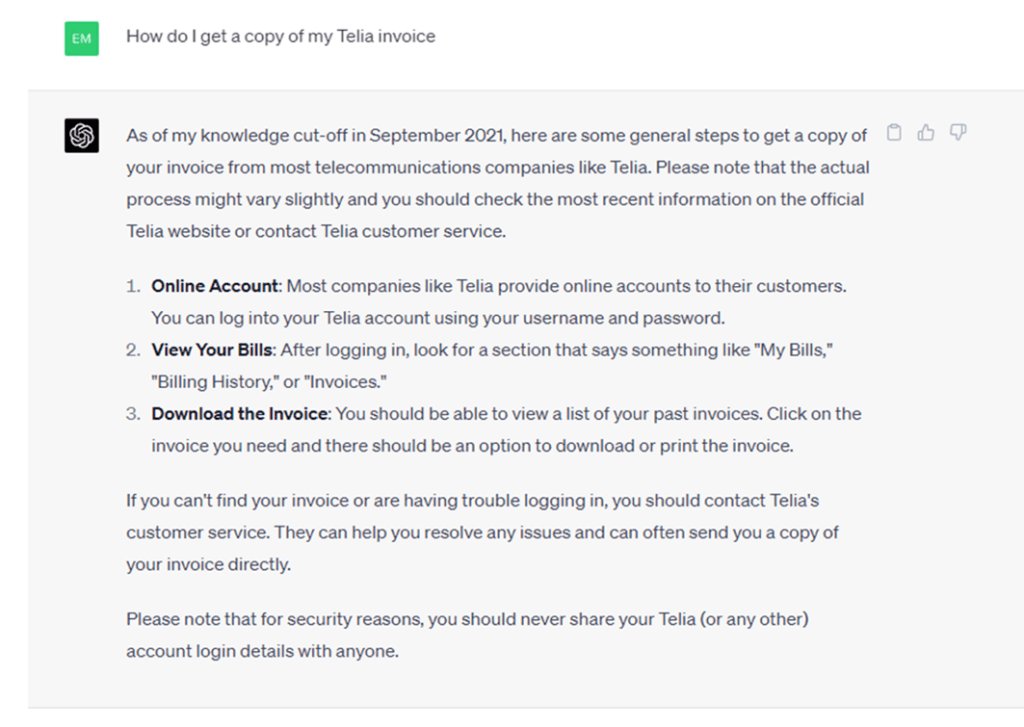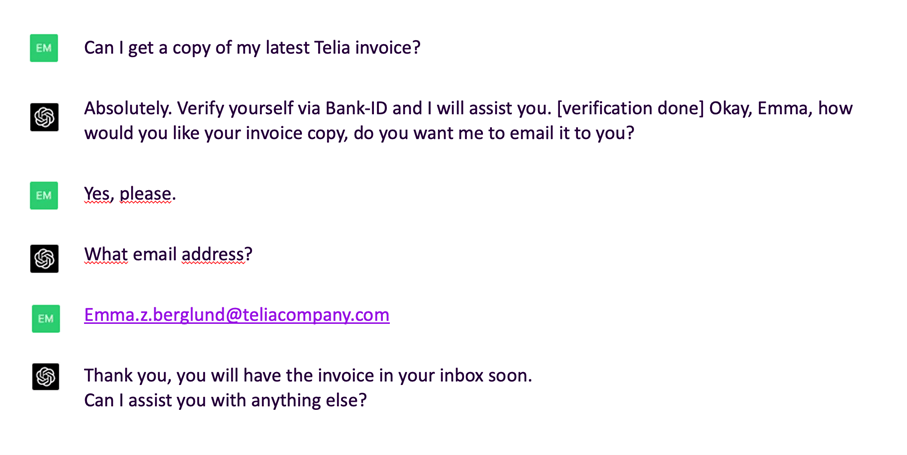AI is really nothing new. But from having improved at a rather slow pace for many years, the development suddenly accelerated, and made a giant leap. The result is that we now have AI that the user would call “smart for real”.
But even though tools such as Bard and ChatGPT are incredibly smart and powerful, we can’t put them behind the wheel and leave them to it. The generative AI-models do not only have computer brains that are lighting fast, but they also have a number of non-desirable traits: They lie and make things up, and do so with conviction. It’s called that they are “hallucinating”.

AI needs a boss that’s in control
I asked ChatGPT which personality traits that characterize a human who exhibits behaviors similar to AI-hallucinations. After a short dialogue, ChatGPT suggested that those traits may describe a narcissistic psychopath. They are hardly qualities that you will see in a job posting, but they sometimes come as a part of the package anyway. It’s easy to be seduced by someone who expresses themselves in a confident and credible way. Regardless if it’s a human or a machine.
So, what do we do if we hire a person who doesn’t quite know right from wrong, and who takes undesirable initiatives? Well, the answer is to make sure that there is a clear structure so the person will put their abilities to good use. And that is exactly the way we need to think when we implement AI-tools as well. Aside from having a plan for how we turn the superpowers into value, we also need to know how to mitigate the risks.
Use technology to solve problems
New technology is prone to make us worried that we are falling behind, which may result in us losing our judgement. We forget everything we know about business development, and we focus on implementing the new technology at any cost, rather than figuring out how to use it to help our customers. Even if we right now are in the middle of a fantastic technological leap, we still need to make decisions based on how the solutions will generate customer value.
When the apps entered the scene there were companies that measured success by the number of apps that were launched. They thought it was a solid KPI that would help them remain competitive.
But rather than considering AI as “the solution”, we need to look at where we are experiencing problems today, and where there is room for improvement. After that we can explore if there is something that AI and automation can help us with. In our business it can be self service solutions that need improving, or to make it easier to generate and find good information.
Let AI manage the large volumes
As a rule, you can say that what’s difficult for human beings is simple for an AI and the other way around. In the contact center AI is often a great option for managing issues that occur frequently but are less complex.
Today ChatGPT can help us find answers to our questions:

But now we are moving into a more complex domain. In the future, when AI can help us take the next step, it may look something like this:

AI is changing the rules of the game in all industries
The development of AI is well aligned with how we at Telia are thinking and developing our solution. AI-automation has been around as a strategic pillar in our solution since the beginning of the 2000s, and now that it’s really taking off we are looking forward to guiding our customers on their AI journeys.
Are you up for some more AI talk? Head over and sign up for our expert webinar “AI & ChatGPT – for the customer meeting of the future“


